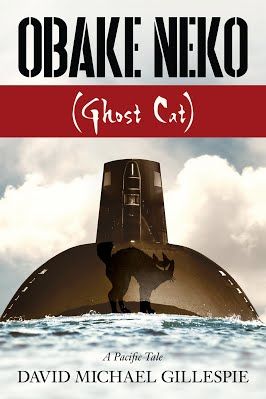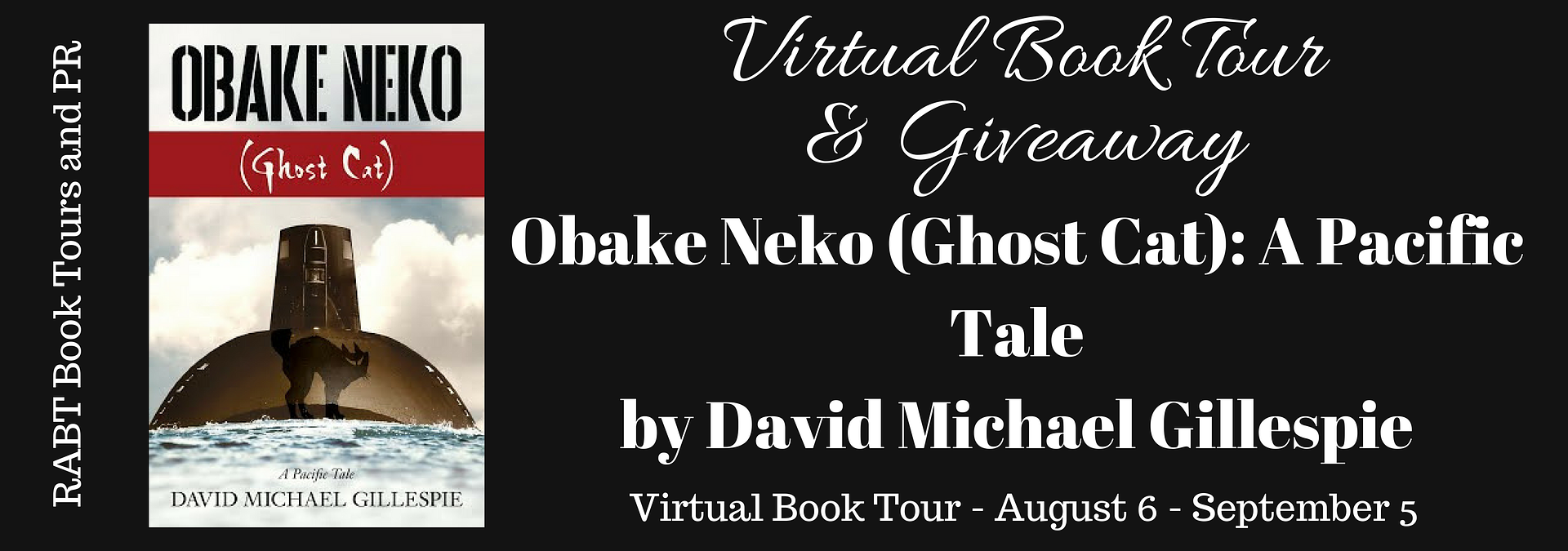
Mystery/Historical Fiction
Date Published: May 31, 2018
It begins with a disappearance… In the waning days of World War II, the Obake Neko is the last surviving Sen-Toku—a huge secret aircraft-carrier submarine created by the Imperial Japanese Navy. As the war comes to an end, the Obake Neko sets sail back to Japan with a cargo of unimaginable value. In the chaos of Japanese surrender, the clandestine vessel and its crew vanish in the seas of the South Pacific.
Fifty-five years after the war’s end, former U.S. Navy pilot, Bud Brennan breaks into Pearl Harbor’s submarine museum in Hawaii. Bud’s son, Mike, is still raw from the death of his wife and grappling with a new career but still jumps in to help his dad. But when Bud’s antics garner the attention of the Navy’s JAG, Mike realizes his father may possess knowledge about the near-mythical Obake Neko and its fabled cargo—knowledge that is also of great value to the Japanese Yakuza. Now, Mike must scramble to learn the whole truth of his father’s decades-old connection with the legendary Japanese submarine and fight to defend his father from relentless military authorities and deadly Yakuza operatives. Even decades later, the Obake Neko and its legendary cargo are still worth killing over.
Can Mike discover the truth and protect his dad before deadly assailants succeed in silencing Bud forever?
Interview
1. Is there a message in your novel that you want readers to
grasp?
Absolutely! My
inspiration is Jules Verne, who’s motivation to write was to bring the world of
science to the average person. My message was to highlight the unique, Sen
Toku, aircraft carrier submarine the Japanese built at the end of the war.
Also, to bring to
light a side of Hawaii and the Pacific islands that most people never see or
know.
2. Is there anything you find particularly challenging in
you writing?
Finding the right
balance. Balance in describing a location - not too little detail or the reader
is left without a clear picture, and not too much or the reader is
overloaded. Same with describing people.
Enough description to provide an image of what the character looks like, but
not over detailed on clothes, facial features that most likely will not be
retained by the reader.
3. How many books have you written, and which is you
favorite?
Only one, but it is
my favorite! I really liked how my novel came together. What was originally
bits and pieces, then unconnected scenes, and finally into what I believe is a
cohesive two-storyline novel with unique characters, locations and plot.
4. If you had the chance to cast your main character from
Hollywood today, who would you pick and why?
Actually, I used
headshots of movie stars as a basis for most of my characters. From the
headshot I would modify certain aspects and attributes, so my characters didn’t
come off as stereotypes.
For my two leads in
my modern Hawaii storyline I would cast Harrison Ford as the father and Jeremy
Sisto as the son. For my WWII Japanese leads, I would cast Toshiro Mifune as
the ship’s captain and a Japanese Red Buttons (if there is such a character)
for his jokester sidekick.
5. When did you begin writing?
While I have written
many business reports and analysis over my business career, I never attempted
fiction until about three years ago. I seriously began my first book at that
time. I did not take any writing classes or workshops, and while I did buy a
lot of books on the craft of writing, I never did the writing exercises in the
back of each chapter. I’ve been a heavy reader of fiction all my like. I felt
like I had a good idea of how I wanted to write my story.
6. How long did it take to complete your first book?
About three years.
Writing it took about two years. Rewrites, edits, beta reader reviews,
rewrites, edits, beta reader reviews, etc. took a solid one year.
7. Did you have an author who inspired you to become a
writer?
Two authors come to
mind – Michael Connelly who writes the Bosch detective series, and Truman
Capote. Connelly’s style is few frills, clean crisp dialogue, good pacing, good
real characters and exciting plots. All attributes I wanted to copy. Truman
Capote took what could have been a simple true crime incident and wove the
events into a great story – In Cold Blood.
8. What is your favorite part of the writing process?
I have three parts
that I like. I’ve come to enjoy the initial research involved in writing my
story, the development of a scene, and, surprisingly, the internal editing
process once the story is laid down.
The research I had to
perform for my book opened up so many unique things about the places and people
I wanted to write about. Every day I learned something new and tried to use it
to enhance my story.
Using a scene sheet I
developed, I stretch my imagination to make each scene stand out on its own,
with a hook, a beginning, middle and a solid ending.
Once I complete a
solid draft of a scene, I put on my editor hat and fine-tune my dialogue,
description, character movement, plot – everything. I religiously use an
editing software (ProWritingAid) that helps me find repeat words and phrases,
overuse of initial pronouns, pacing issues and many other variables that
tighten up my text.
9. Describe your latest book in four words.
Unique historical
action mystery.
10. Can you share a little bit about your current work or
what is in the future for your writing?
I really like the
two-story format, with one storyline in an earlier timeframe and then have the
current day storyline mesh up toward the end of the book.
For my past
historical timeframe, I plan to follow one of Roy Andrew Chapman’s expeditions
on dinosaur bone hunting in the Gobi Dessert in the late 1920’s.
For my current time
frame, I plan to use many of the cast of characters in Hawaii that I used in my
first book, Obake Neko.
An out-of-this-world
object is found at one of Chapman’s digs by a young orphaned boy in 1929. This
object’s unique powers will be sought by emperors and warlords in China and unknowling
wind up in Hawaii in the hands of my last novel’s hero, Mike Brennan, in the
year 2001.
About the Author
David Gillespie moved to Hawaii as a teenager, where he attended public schools and graduated with a BBA and MBA from the University of Hawaii at Manoa.
Gillespie has had a varied career in Hawaii’s business community. As a consultant with a University of Hawaii program, he traveled to many Pacific Island nations. His experiences in these exotic locales, along with his keen interest and research about the Sen-Toku Japanese submarines, inform and enhance his writing.
Gillespie is retired and has taken up home improvement projects, earned a private pilot license, and works on writing historical adventure novels. He continues to enjoy life in Hawaii, his home, with his family and a tuxedo cat named Tick Tock.
Contact Link
Purchase Link





1 Comments
Thank you for posting
ReplyDelete